The Defiant Gaze
An exclusive interview with photographer Tshepiso Mazibuko who turns the idea of the ‘gaze’ on its head by giving us glimpses into her community, making us see how the singular ripples out into the world with confidence and defiance
Vani Sriranganayaki
In 2014, Tshepiso Mazibuko photographed a looting in her community. When she was confronted by the authorities and asked to share the images, she had refused and ended up spending a night in jail. ‘I am loyal to the people I photograph and whenever I share images of them it’s like a photograph of myself, which makes it personal – because I put them at a place for scrutiny, I also put myself there,’ she told me, unflinching and candid, over an e-mail interview. It was exactly this process – where she turns the complexity of the ‘gaze’ onto herself – that shapes her identity as a journalist and photographer, and what drew me to her images.
Born in 1995 in the township of Thokoza, Ekurhuleni in South Africa, Tshepiso primarily photographs people within her community. With Thokoza’s volatile history, the stories that her works speak of are in fact a rare peek into the collective memory of the people who bore witness to the past and, in many cases, still endure its consequences in the present. In the series titled Encounters, for instance, Tshepiso simply captures chance meetings that take place between her and the residents in her community, that somehow lead us, the viewer, to stories of quiet power frozen in time. ‘The people I photograph are part of my community, but that doesn’t necessarily mean I personally know them. It is with the process of photography that I then begin to build relationships with them. We get to have moments together where I share parts of myself with them and in return they share parts of their lives too. And each and every experience that I carry with me, I believe, has made me the woman I am today,’ she says.
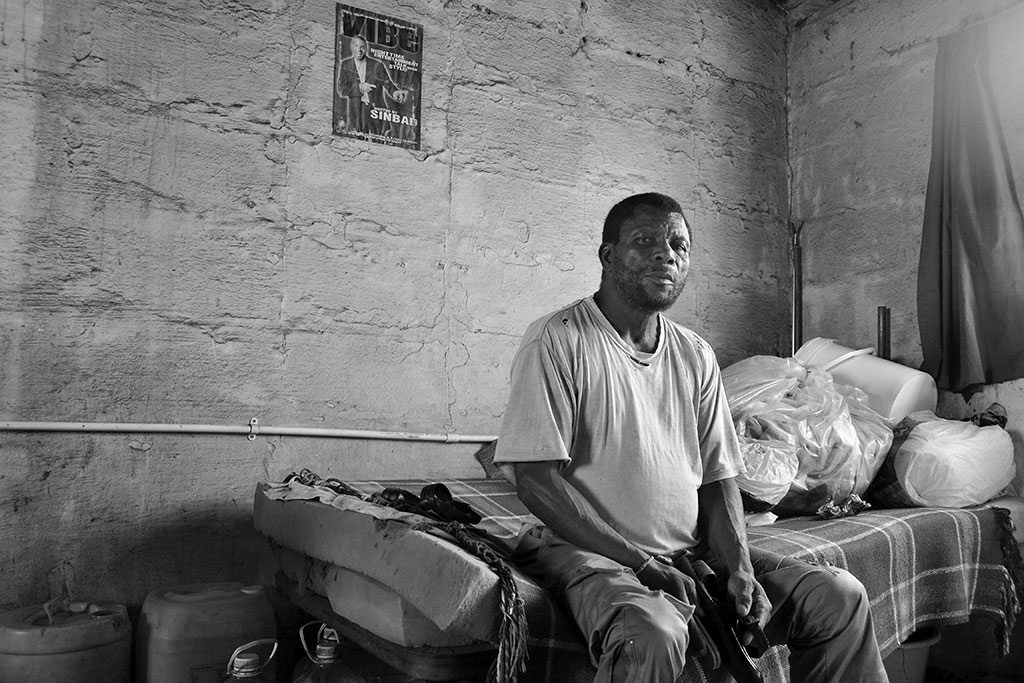
As source materials go, Tshepiso’s is perhaps riddled with tragedy, loss and the sense of theatricality that comes with it. But her process of documenting it and what is produced at the other end of her camera are nothing short of revelatory and intensely honest. ‘Photography is fiction,’ she says. ‘I choose what I want the viewer to see. Perhaps not every time, but I believe that in my subconscious a decision is made to create a truth I believe in. I don’t like to call myself a storyteller because no matter how hard I try to talk about someone’s life, I can never deliver the story as perfectly as they would have.’
Clearly, in Tshepiso’s world, the ‘gaze’ is constantly in motion, going back and forth like Newton’s cradle. You can’t look away, you dig deeper and maybe find that one thing that resonates with your own self. It’s a two-way street. So that, when you stare at the image of a shirtless young man, pictured while sitting on a weathered sofa, looking straight into Tshepiso’s camera (and therefore straight at you), you cannot help but wonder who is watching whom. And whose story will finally be revealed.
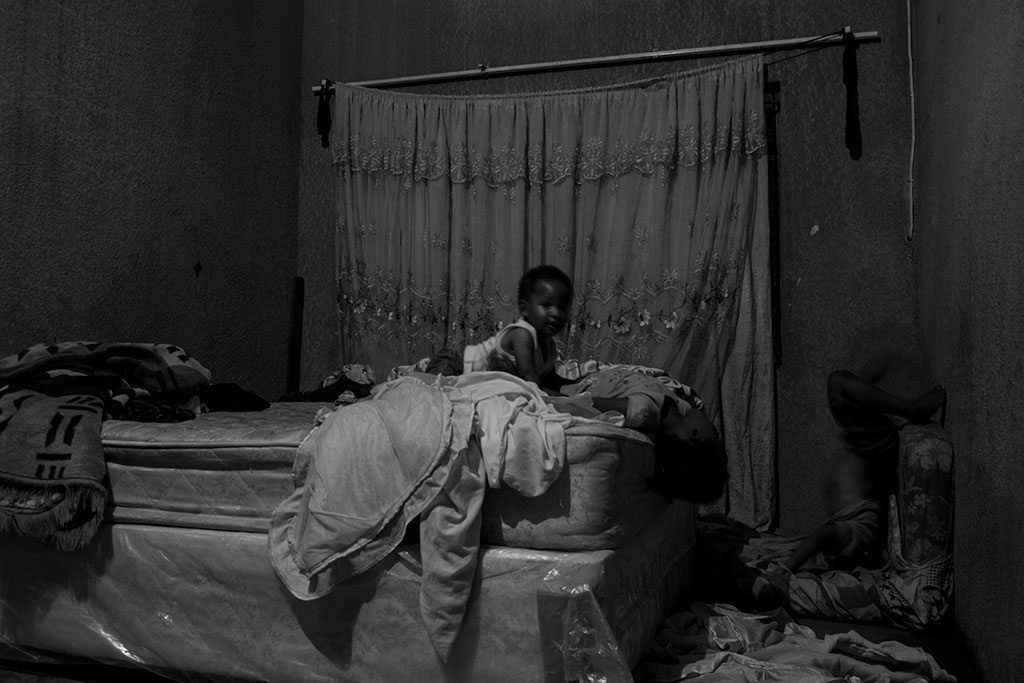
Excerpts from the interview
You were introduced to photography by the ‘Of Soul and Joy’ initiative funded by Rubis Mécénat when you were in high school. What about the project attracted you the most?
Honestly, when I first was introduced to the ‘Of Soul and Joy’ project, I wasn’t really keen on photography. However, since I was doing visual arts at the time in high school, it made sense to join the project. Turns out I made a great choice by joining because I have somewhat found a family in the project. I realised that this medium of photography was made for me, because I am very vocal about my society, be it history or the landscape. And even though I was adding social commentary about my community with the images, I was not imposing my views on other people. I would like to think that is what the purpose of photography should be: let people interpret images and create layers and be a part of your story by engaging.
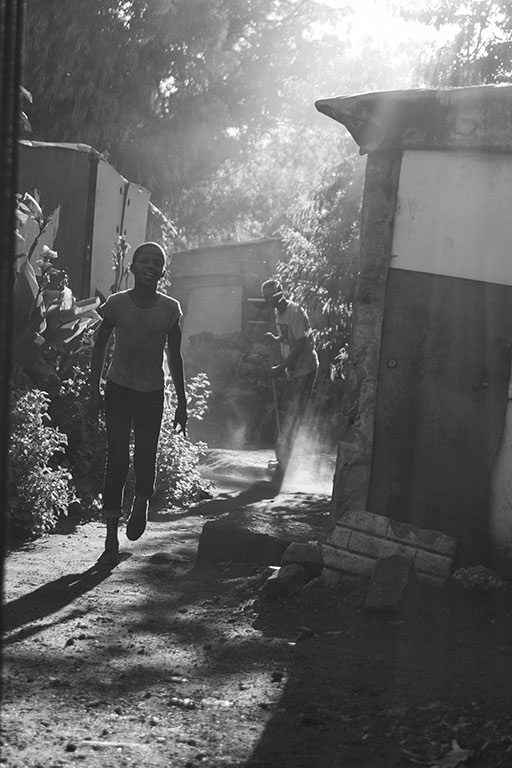
Through your work, you get to meet people at their most vulnerable – where they allow you to invade their most private spaces. How do you then navigate the dynamics of power, trust and control that comes with such interactions?
I don’t think the people I photograph are vulnerable. Of course it a sacred experience that I am a part of: being in people’s spaces, private spaces for that matter … I have often observed that I might have the superpower of being a fly on the wall. I get along with people really well. Sometimes it gets awkward, and I choose to portray the awkwardness or whatever emotion I am feeling. I just go with the flow.
There is a story embedded in almost all your photographs. Although they might share similar contexts, they are still different every time. What do you personally look for in an image when capturing it?
I am mostly drawn to the light when I photograph; it is like I see in black and white. Ironically, more recently, I am beginning to look for colour while photographing, like how a painter would assemble colours on a canvas.
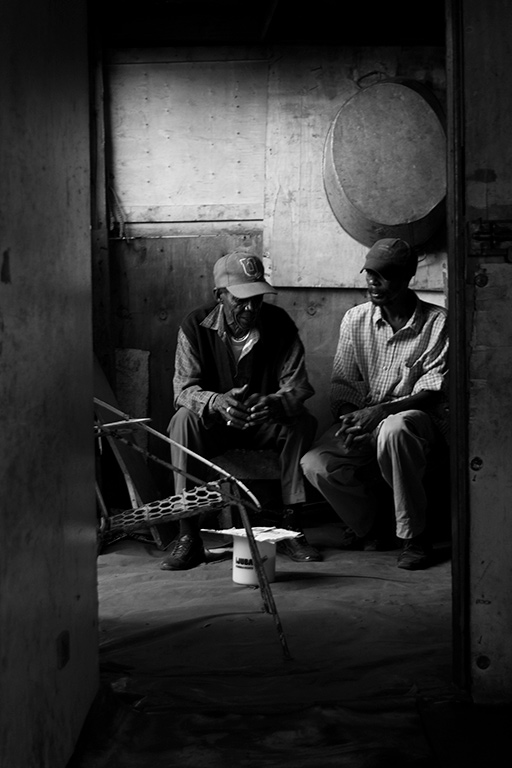
Although documentary in nature, your works seem to have a sense of theatricality to them. Is this circumstantial – a by-product of the community’s collective experiences and history – or is it intentional?
When photographing I know what I want the image to look like. Perhaps it is intentional but sometimes it just happens. The atmosphere where I am photographing often takes the lead on how the final product might look like.
In all your photographs, your distinct vision and aesthetic sense are unmistakably evident. How do you manage this consistently? Are there any prior preparations involved?
I am not really an organised photographer. My photographic process does not have a formula. In a month I would have perhaps two images that I think work, and in the next I might have thirty! The process varies with contexts with regard to the work.
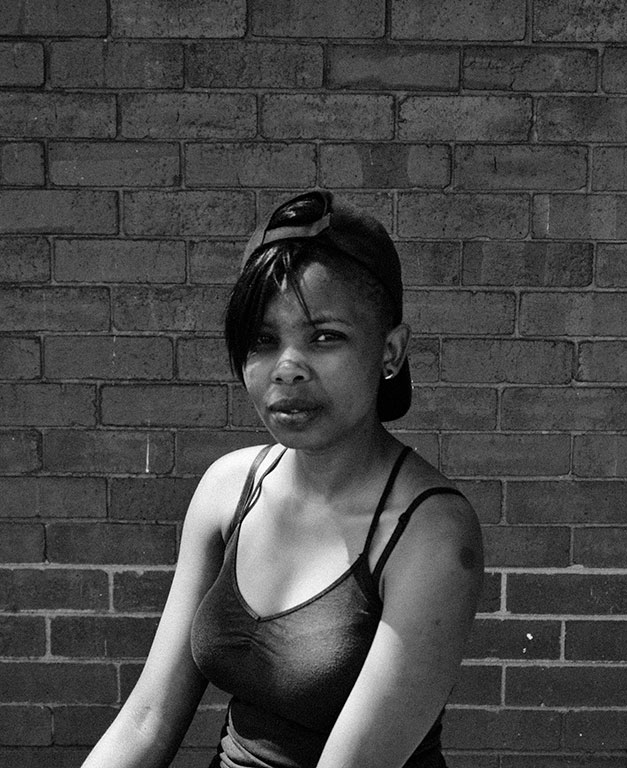
Where would you say is your photography going? What other projects should we look out for in the coming days?
I am leaning towards conceptual photography, and over the years my work has been very personal and self-reflective. I am not sure how I feel about that. I am yet to engage with those thoughts. I have recently completed a body of work with the Market Photo Workshop under the Tierney Fellowship, which will amount to a solo exhibition in mid-October this year. I am pretty excited about that. Now I am currently working on a project where I have been awarded a project grant from the Prince Claus Fund. Hopefully, that will be completed by the end of this year.
Finally, what do you personally seek to express throught your images? And if it can be described in one word, what would it be?
I try to not have expectations with my photography because sometimes the narrative on its own creates or expresses itself without me imposing my views. But if there had to be a word, it would be ‘defiant’.
Share